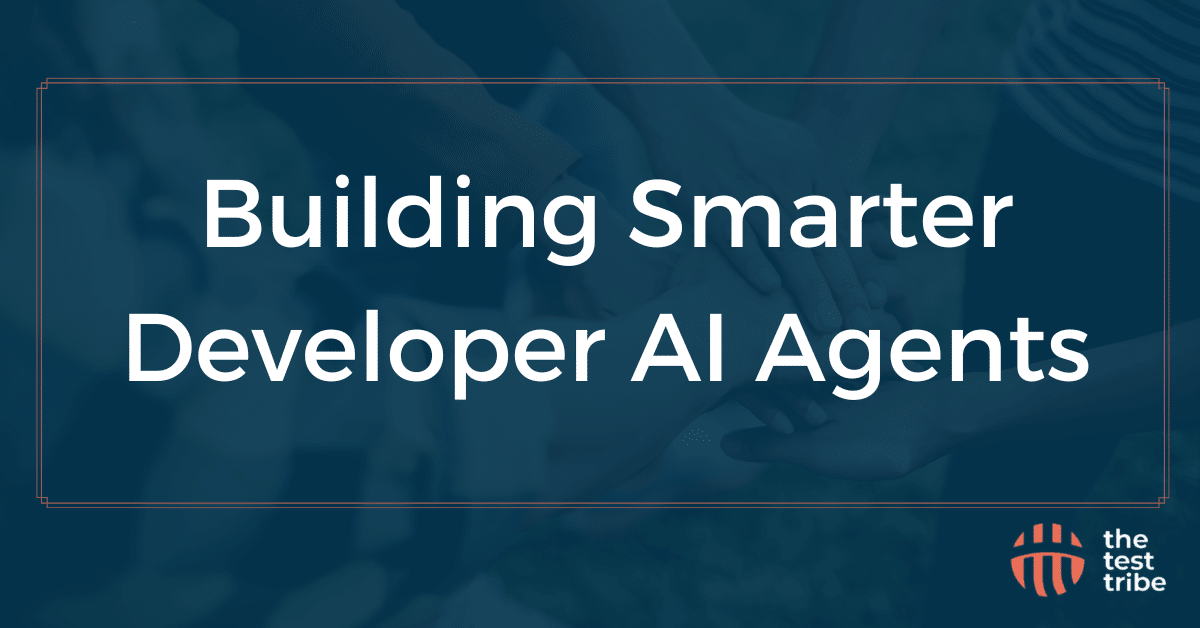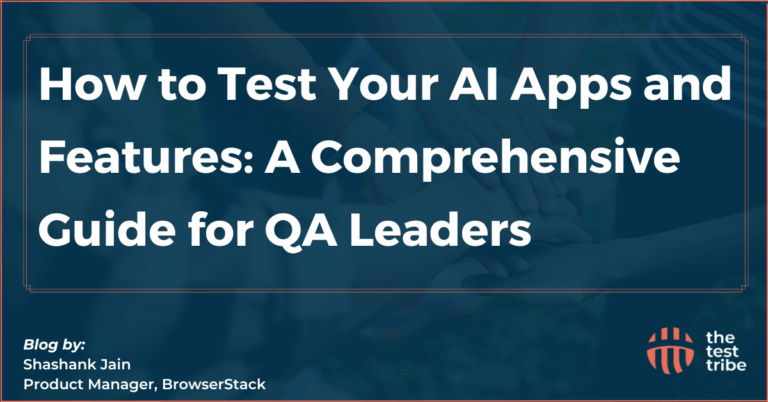AI code generation is at a Pareto threshold. The first 80%—writing simple, functional snippets—is relatively straightforward. But the last 20%? That’s where it gets tricky. Building resilient, adaptable systems isn’t just a technical hurdle; it’s a leap of imagination and engineering, similar to the journey toward self-driving cars. Remember when everyone thought fully autonomous vehicles were “just around the corner”? Yeah, it turned out to be much more complicated than anticipated.
The future of AI is about an autonomous AI agent capable of self-correction, learning, and adapting. Imagine an AI developer who doesn’t just write code but improves and evolves itself, fixing errors and extending capabilities. That’s what’s next: an AI with a deep, contextual understanding of the systems it works within, moving beyond syntax to full semantic awareness.
QA automation is more than testing—it’s the foundation for AI engineering excellence to thrive truly. The future of QA automation goes far beyond traditional testing. It’s about empowering AI engineering agents to take on complex challenges autonomously and deliver meaningful outcomes independently. Without a potent QA AI agent, the dream of independent, real-world-ready AI engineering agents remains out of reach. The vision is more significant than testing; it’s about enabling the next generation of intelligent systems. What’s in store is a redefining of QA Automation and End-To-End Testing.
Building QA Automation to Keep Up with the Machines
In the rapidly evolving world of artificial intelligence, conversations about engineering and quality assurance (QA) often gravitate toward tools, processes, and bug fixes. But this isn’t about the nuts and bolts—it’s about creating something much more significant for the larger picture: AI agents capable of autonomously completing complex engineering tasks, end to end, without human intervention.
To achieve this vision, there’s one undeniable truth: you can’t build an AI engineering agent without first building a QA AI agent capable of keeping up with it.
Why QA Automation is the Key to Autonomous AI Engineering
The engineering process won’t change; there will still be release issues in production, new products, new features, etc. No matter how advanced, AI engineering agents aren’t immune to errors. Complex systems inevitably introduce bugs; without rigorous QA, these systems can quickly spiral into chaos. This is why QA AI automation is a critical piece of the puzzle.
Imagine an AI agent working tirelessly to develop new software. As it progresses, it’s bound to make mistakes—whether that’s a broken feature, a missed edge case, or a flawed integration. Imagine a QA AI automation agent working alongside it, constantly testing the entire system, identifying bugs in real-time, and providing immediate feedback to the engineering AI agent.
This feedback loop is transformative. The QA AI automation agent enables the engineering AI agent to iterate quickly, fix issues immediately, and push boundaries without waiting for human intervention. Together, they create a system where creation and innovation happen faster than ever.
Future Tools for AI End-to-End Testing
Creating this seamless feedback loop requires complex tools and approaches. Platforms and frameworks provide the infrastructure to test entire systems precisely and efficiently. But these tools are just the beginning. The ultimate goal is to build QA AI automation agents that don’t just catch bugs but seamlessly anticipate and correct them in real-time. By leveraging large language models (LLMs) with access to the codebase, these agents could do much more than testing—they could run commands, make code changes, and implement fixes in the real world.
How it could function:
- The LLM analyzes the codebase, identifies potential vulnerabilities, and suggests improvements.
- The QA AI automation agent tests to validate those changes, ensuring everything functions as expected.
- If issues arise, the QA agent provides immediate feedback
- The QA automation agent analyzes the changes and failures across previous problems and fixes them to identify the root cause and a potential solution.
- Allowing the engineering AI agent to make corrections simultaneously.
This collaboration between the two AI agents is the foundation for a genuinely autonomous engineering system.
Thriving AI Engineering Agents
The vision for QA automation goes far beyond testing. It’s about creating systems that enable AI engineering agents to thrive. Without a robust QA AI agent, there’s no way to build an AI engineering agent that can operate independently, tackle complex tasks, and deliver real-world results.
The desire is to make QA automation a cornerstone of AI engineering’s future—not just as a support system but as an integral part of the innovation process. Platforms based on AI and frameworks like Playwright are already paving the way for AI end-to-end testing.
AI end-to-end testing with AI and Playwright
AI-driven end-to-end (E2E) testing is raising the bar for software quality. At the forefront of this revolution are tools like Checksum.ai, which seamlessly integrates with tools like Microsoft-backed Playwright to deliver a robust, automated testing framework. Analyzing actual user sessions and generating robust end-to-end tests that evolve with your application ensures every critical workflow is covered.
The Challenges of Traditional E2E Testing
Unlike the streamlined CI/CD pipeline, E2E testing is often a bottleneck. Complex test setups, flaky tests, and unreliable results create delays and frustrations for engineering teams. Traditional approaches struggle to keep up with fast-moving codebases, leading to high maintenance costs and fragile tests that fail when needed.
Smarter Testing, Faster Development
Companies need a tool that doesn’t just detect bugs—it can predict them. By leveraging an ever-growing reservoir of software usage data, including failed tests, pull requests, bug fixes, and production metrics; proprietary AI agents learn to anticipate failures before they happen.
The result? A proactive approach to quality assurance that catches issues early enables your team to focus on innovation. With fewer interruptions from bugs and regressions, engineers can spend more time building new features, launching products, and pursuing bold ideas.
What Makes AI a Game-Changer?
Automation is redefining E2E testing with AI-driven innovation. Checksum.ai, for example, standout features include:
- Autonomous Test Generation: Automatically create and update test cases based on real-world user interactions, keeping your tests in sync with evolving code.
- Self-Healing Tests: Say goodbye to flaky tests. It identifies and repairs failing tests autonomously, reducing manual intervention and boosting reliability.
- Continuous Maintenance: With its AI-powered maintenance capabilities, your test suite stays resilient and efficient, no matter how rapidly your application evolves.
From Episodic Testing to Continuous Quality
They evolve as AI tools process more failures, analyze root causes, and observe fixes. Checksum.ai provides a comprehensive solution to the urgent, unsolved problem of end-to-end testing. Its predictive capabilities empower teams to move beyond traditional episodic testing, embracing a new era of Continuous Quality (CQ). Just as CI/CD transformed how we release software, Checksum.ai is leading the charge to transform how we ensure quality—seamlessly, continuously, and intelligently.
A New Era of Autonomous Engineering
As we build these systems, the possibilities are endless. An AI engineering agent that can create, test, and deploy solutions autonomously could revolutionize industries, from software development to robotics to scientific research- in short, the future of technology.
But none of this happens without QA AI automation. The feedback mechanism, the safeguard, and the accelerator allow AI engineering to push the envelope. By investing in this crucial step, we’re not just keeping up with the future of AI engineering—we’re shaping it.
The next chapter of AI is here, and it starts with a simple idea: to build an engineering AI agent capable of tackling the impossible, you need a QA AI agent that’s just as capable. And together, they’ll change the world.
Innovating with Checksum and Playwright
You can future-proof your testing through AI end-to-end testing with Checksum.ai and Playwright. Using it gives you the power of AI-driven, self-healing, and predictive testing that adapts as your application grows. The features that it offers let you take the next step toward the future of software quality with Checksum.ai.
With this tool, you can transform your testing framework and deliver flawless software faster. Learn more about how Checksum.ai can revolutionize your QA process today!





